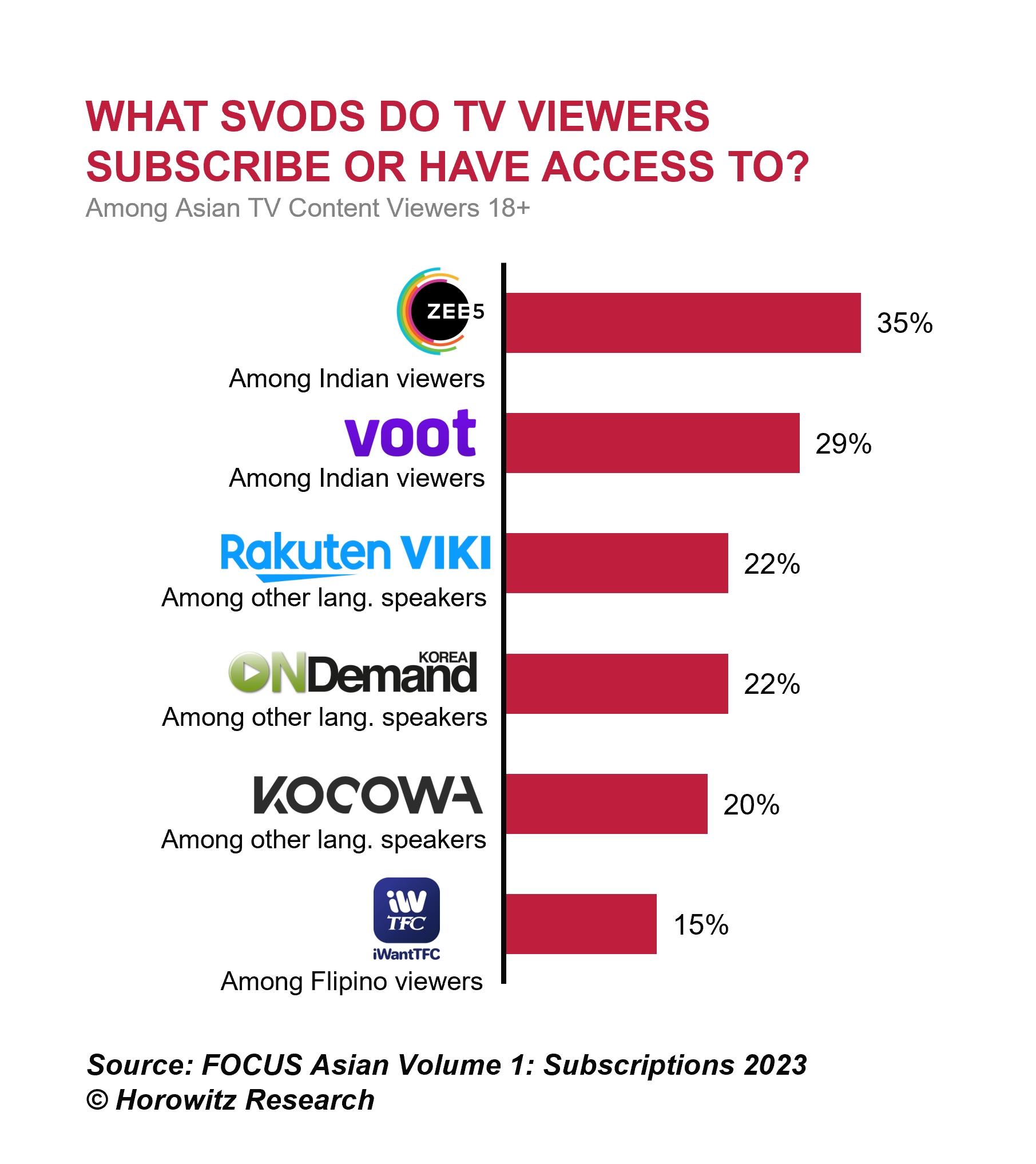Asian Americans Spend More Time with Streaming Content Than TV
81% of Asian viewers are streamers, and streaming makes up almost 6 out of every 10 hours of viewing time among Asian viewers, according to Horowitz Research

A new study from Horowitz Research highlights the importance of streaming media for Asian-American audiences and their ongoing interest in Asian-language content.
“Clearly, there’s been an explosion in interest in Asian content – driven not only by Asian audiences but audiences in general,” notes Adriana Waterston, insights & strategy lead and executive vice president for the Horowitz Research division of M/A/R/C Research. “As media companies continue to lean into the Asian content opportunity, we anticipate that this will lead to even more varied and diverse stories that represent the entirety of Asian experiences, cultures, and communities globally and in the U.S.”
Horowitz Research has long documented the importance of streaming media for Asian-Americans, Latinos and African-Americans with studies that have shown higher usage of digital and streaming media among those groups than the general population.
In its newest study, Horowitz found that six in 10 (61%) Asian TV content viewers watch Asian-language content at least occasionally, and two in three (65%) Asian-language dominant/bilingual consumers say that Asian-language content is important to them.
The new FOCUS Asian Volume 1: Subscriptions report by Horowitz Research also found that six in 10 Asian viewers watch international content, underscoring an opportunity for media companies to continue to invest in Asian-themed content that is resonant to and inclusive of all Asian cultures, the researchers noted.
The report also stressed that Asian-Americans have always been on the leading edge of streaming adoption. Tracking data reveals that 61% of Asian TV content viewers were streamers in 2013, compared to 45% of total market and 30% of White, non-Hispanic consumers. Today, 8 in 10 (81%) Asian viewers are streamers, and streaming makes up almost 6 out of every 10 hours of viewing time among Asian viewers.
In the newest data, subscriptions to SVOD services have remained steady among Asian TV content viewers. Nearly 7 in 10 (69%) Asian viewers subscribe to at least one SVOD, in line with consumers overall, while an additional 14% have access via password sharing or bundling of services, the Horowitz Research study found.
Get the TV Tech Newsletter
The professional video industry's #1 source for news, trends and product and tech information. Sign up below.
When it comes to deciding whether to subscribe to streaming services, access to original and international content is key among Asian viewers. While Asian audiences subscribe to the top SVODs, including Netflix, Amazon Prime Video, and Disney+, Asian-targeted and Asian-language SVODs like Rakuten VIKI, OnDemandKorea, and ZEE5 are also important.

Usage of free streaming services has tripled among Asian audiences within the past five years. In 2019, only 1 in 4 (23%) Asian TV content viewers said that they use free streaming services; this year, nearly 7 in 10 (68%) report using them. Free, ad-supported streaming TV (FAST) services – like YouTube, Tubi, Pluto TV, and Samsung TV Plus – are key drivers of free streaming usage. In fact, nearly half (45%) of Asian viewers report using FAST. This underscores an opportunity to super-serve the Asian audience with culturally relevant content on these free, ad-supported platforms, the researchers said.
The Horowitz survey was conducted in January-February 2023 among 500 Asian TV content viewers 18+. Data have been weighted to ensure results are representative of the Asian TV universe.
For more information about the FOCUS Asian Volume 1: Subscriptions 2023 and FOCUS Asian Volume 2: Viewing Behaviors 2023 reports, visit here.
George Winslow is the senior content producer for TV Tech. He has written about the television, media and technology industries for nearly 30 years for such publications as Broadcasting & Cable, Multichannel News and TV Tech. Over the years, he has edited a number of magazines, including Multichannel News International and World Screen, and moderated panels at such major industry events as NAB and MIP TV. He has published two books and dozens of encyclopedia articles on such subjects as the media, New York City history and economics.

